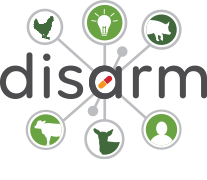Improving calf housing with polycarbonate calf pen sections
It is standard practice to thoroughly clean calf housing and pens between batches. This can be time consuming and the material that the pens are made of has an impact on how effective the cleaning and disinfection process will be. It is also important to have similar sized calves in each batch to reduce competition for food and the spread of infection from older to younger calves.
This dairy farmer from the UK has designed and installed a novel calf pen consisting of a metal framework with a Jourdain locking yoke front and tailor-made side slots, which allow the insertion of polycarbonate side partitions. The polycarbonate side partitions can be removed and inserted quickly and easily, allowing flexibility in pen size and therefore number of calves per pen. The farmer groups 2-4 calves per pen, noting that this helps to encourage the calves to feed, reduces stress and avoids the negative effects of dominant bigger calves. Managing groups of calves of similar sizes/ages would otherwise be problematic in an all–year–round calving herd. Additionally, the polycarbonate partition is very easy for the farmer to stream clean, saving time and improving the effectivity of the cleaning and disinfection process.
The calf shed includes a ventilation tube to improve airflow as well as sloping floors to aid drainage, keeping the calf beds dry. Improving ventilation and reducing moisture from damp beds helps lower the incidence of lung disease. This updated calf accommodation has made management much easier for staff and reduced calf mortality rates significantly (from 8% to 0%), with a corresponding reduction in antimicrobial treatments. This has led to reduced costs through better use of staff time and fewer calves needing treatment.
